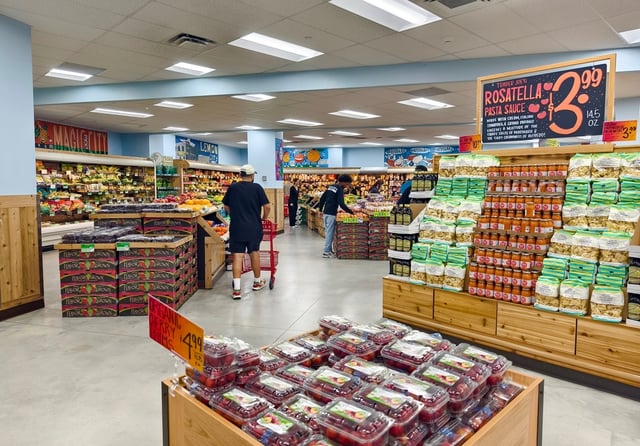Why Specialty and Value Chains Had a Stellar Year
If ongoing headwinds continued to stir up the retail market in 2024, they shaped a somewhat perfect storm for value chains and specialty grocers. A recent white paper from location analytics and insights firm Placer.ai, titled “Specialty and Value Chains Transform Grocery in 2024,” showed that these formats are attracting shoppers in a hyper-competitive environment.
According to Placer.ai’s analysis, both specialty and value retailers resonated with customers this year, as people were driven by their interests in value, quality and uniqueness. These types of stores regularly outperformed traditional supermarkets in terms of visit growth in 2024 compared to 2023, the firm’s data shows.
[RELATED: Why ALDI's Success Hinges on Obsession With Quality and Value]
Shoppers at specialty and fresh format stores are going out of their way to shop at such formats. Placer.ai found that during the third quarter of 2024, 26.4% of visits to specialty and fresh format grocery chains came from at least seven miles away, compared to 22.7% and 21.4% for traditional and value chains, respectively.
While specialty customers are (sometimes literally) driven by an interest in discovery, value-focused shoppers are on a mission to save money. Placer.ai’s data shows that 26.5% of visits to value chains lasted 30 minutes or more, versus 23.4% for traditional grocery stores and 23.7% for specialty stores.
Ethan Chernofsky, SVP of marketing at Placer.ai, said that these retailers have an opportunity to seize the moment. “If you are coming to me because you love certain parts of our business, how do you extend that a bit? How can I take more advantage of your visit?” he mused, during an interview with Progressive Grocer. “How can I create a scenario where of the 100 items you buy a week, more of it is within my walls?”
The data related to visits and dwell times reflect shoppers’ different take on convenience and retailer’s efforts to deliver on that broadly interpreted proposition. “For us, the biggest takeaway of this report is the overrated idea of convenience and the understanding of value and quality. It means that when we are talking about convenience, if it’s everything then it’s not a thing anymore,” he pointed out.
Hence, the focused models of specialty and value chains are appealing to shoppers who know what they want out of a certain shopping occasion. Retailers across the grocery space can learn from such behaviors, Chernofsky asserted. “If you are not thinking about how to prioritize what products go in what stores, you are missing the point. If the reason they visit is because you are nearby, that’s putting a lot of pressure on proximity,” he said. “What you do – it could be specialty products, it could be value, it could be super high quality – are the things that make you a fit with shoppers. Knowing what you bring to the table – it’s like a return to basics."
Placer.ai’s whitepaper highlighted specialty and fresh format banners including Trader Joe’s, Sprouts Farmers Market, H-Mart and Great Wall Supermarket and value chains such as ALDI, Winco Foods, Dollar Fresh and Joe V’s Smart Shop, among others.






